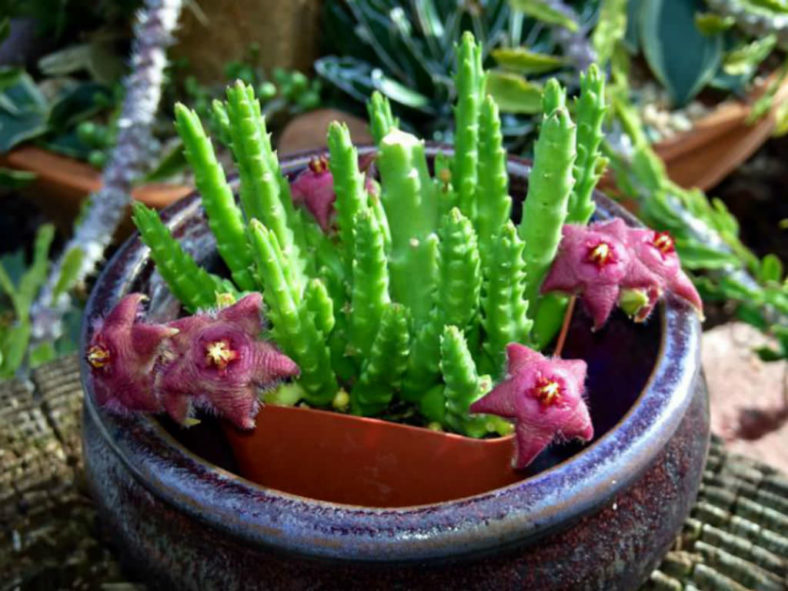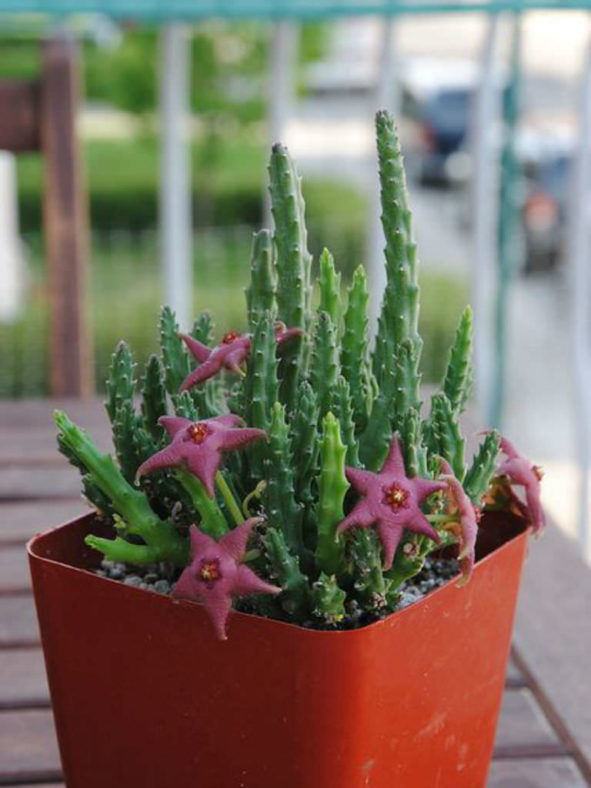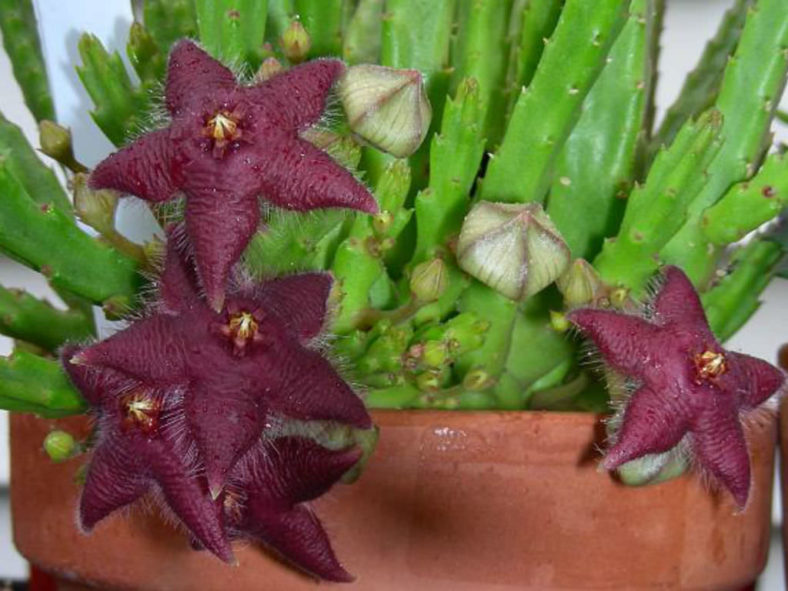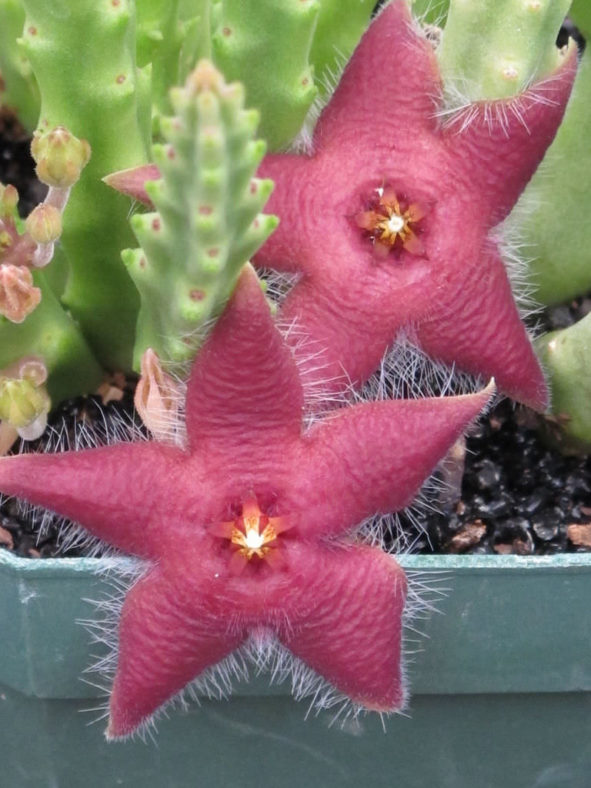Scientific Name
Stapelia paniculata subsp. scitula (L.C.Leach) Bruyns
Common Name(s)
Mini Starfish Flower, Small Starfish Flower, Starfish Flower
Synonym(s)
Ceropegia paniculata subsp. scitula, Gonostemon scitulus, Stapelia scitula
Scientific Classification
Family: Apocynaceae
Subfamily: Asclepiadoideae
Tribe: Stapeliae
Genus: Stapelia
Etymology
The subspecific epithet "scitula" (pronounced "SKIT-yoo-luh") means "handsome, beautiful, pretty, elegant, neat, trim" and refers to the simple elegance of the upright stems of this species.
Origin
Stapelia paniculata subsp. scitula is native to South Africa. It is restricted to Robertson in the Western Cape province.
Description
Stapelia paniculata subsp. scitula, also known as Stapelia scitula, is a small succulent plant with slender, 4-angled, light green stems. The stems can grow up to 3 inches (7.5 cm) long, in cultivation often more, and up to 0.3 inches (0.7 cm) thick.
Throughout the year, Stapelia paniculata subsp. scitula is adorned with proportionately small, star-shaped, magenta or dark chestnut-brown flowers with or without yellowish bands and densely covered with purple or maroon hairs. The flowers can reach a diameter of 1 inch (2.5 cm). The fruits are pairs of spindle-shaped follicles that contain tightly packed seeds.

How to Grow and Care for Stapelia paniculata subsp. scitula
Hardiness: USDA hardiness zone 10a to 11b: from 30°F (-1.1°C) to 50°F (10°C).
Several species are fairly easy to grow. Others, often those with slightly hairy stems and the more unusual flowers, are more challenging and require careful watering (with some fertilizer) during the growing season and complete water withdrawal during the winter months. A minimum winter temperature of 10°C (50°F) is acceptable, provided plants are kept absolutely dry. A heated growing bench or incubator can help delicate plants survive the colder months. However, many species live under shrubs in their habitat and prefer light shade rather than full sun.
A gritty compost is essential, and clay pots are advisable for the more delicate species. Some growers prefer mineral-only compost to minimize the chance of a fungal attack on the roots. A layer of grit on the compost's surface prevents moisture from accumulating around the base of the stems.
Keeping Stapelias and their roots free of pests, such as mealybugs, is key to success, as fungal attacks often occur due to insect damage to the stems.
See more at How to Grow and Care for Stapelia.
Links
- Back to genus Stapelia
- Succupedia: Browse succulents by Scientific Name, Common Name, Genus, Family, USDA Hardiness Zone, Origin, or cacti by Genus
Photo Gallery
Click on a photo to see a larger version.


